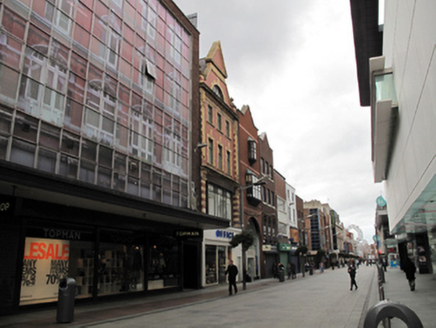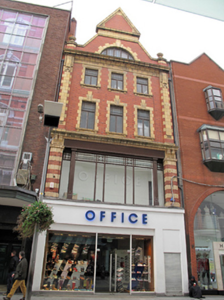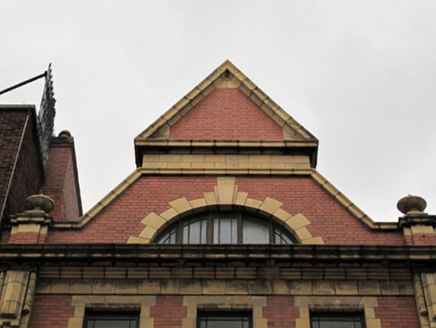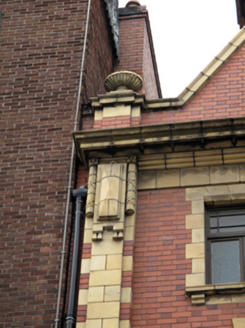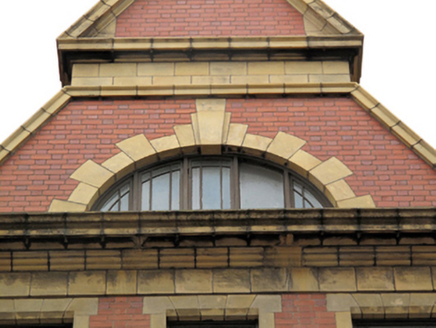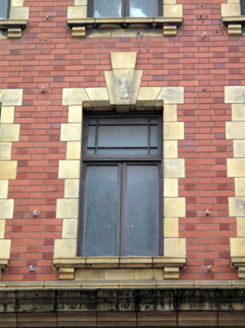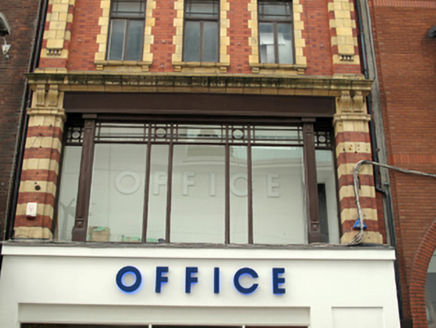Survey Data
Reg No
50010469
Rating
Regional
Categories of Special Interest
Architectural, Artistic
Original Use
Shop/retail outlet
In Use As
Shop/retail outlet
Date
1890 - 1900
Coordinates
315670, 234593
Date Recorded
27/10/2011
Date Updated
--/--/--
Description
Terraced gable-fronted three-bay five-storey commercial building, built c.1895, with shopfront to ground floor. Pitched slate roof behind pedimented gable and red brick chimneystack with terracotta pots to east party wall. Red brick gable with Diocletian window opening formed in voussoired yellow terracotta blocks and original timber windows resting on terracotta crown cornice with squat piers to either end surmounted by terracotta urns. Gable surmounted by equilateral pediment with terracotta mouldings and resting on terracotta block wall. Replacement uPVC rainwater goods breaking through façade below gable. Machine-made red brick walls laid in Flemish bond with polychromatic pilasters framing entire building from first floor upwards. Banded pilasters to first floor surmounted by paired scrolled console brackets supporting full-span terracotta cornice over first floor display window. Pilasters continue from first floor cornice to deep terracotta crown cornice over third floor windows framed by panelled terracotta brackets with drop fasces. Square-headed window openings to second and third floors with terracotta block-and-start surrounds, bracketed and moulded terracotta sills, original timber casement windows and stepped keystones to second floor openings. Possibly original fixed-pane timber-framed display window to first floor with panelled pilasters, margined overlights and angled fascia. Recent shopfront spanning ground floor.
Appraisal
This gabled commercial building is one of only two buildings on Henry Street to have survived the 1916 Rising. Built in the late 1890s, the decorative use of yellow terracotta and red brick results in a colourful façade complemented by the retention of early timber casement windows. As a survivor of the Rising the building is of particular importance in its twentieth-century context and in its contribution to the variety of building styles that gives the area its present eclectic architectural character.
